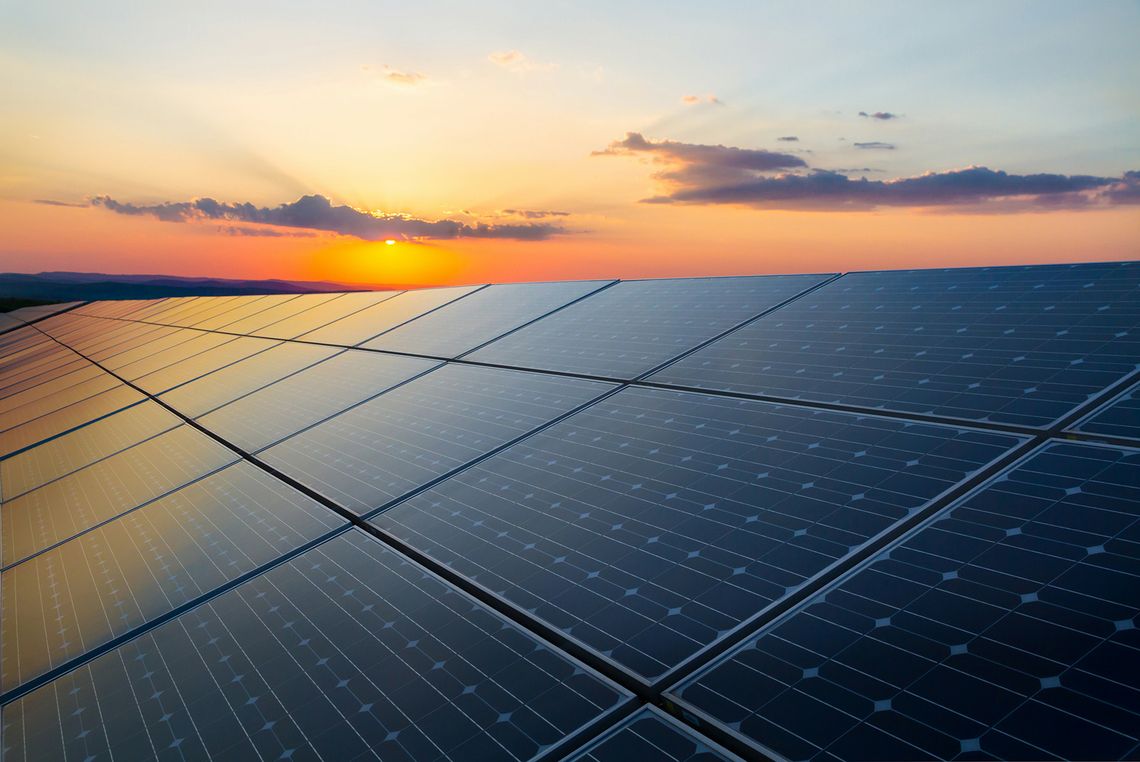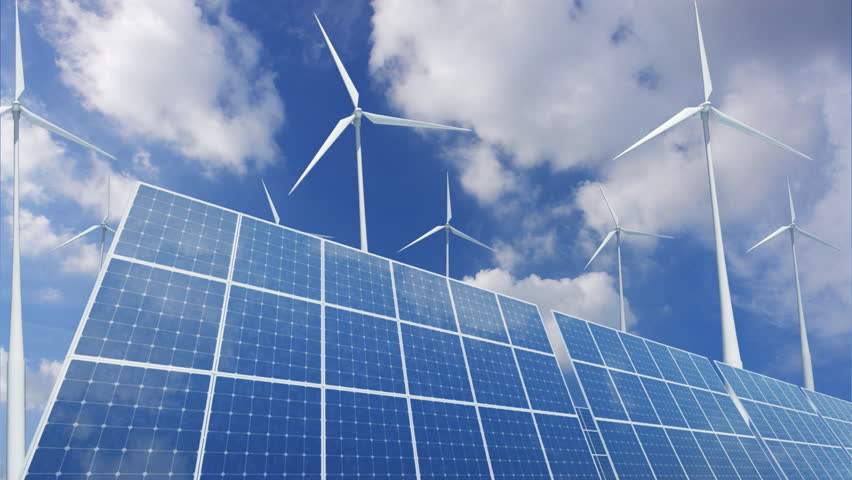The share of renewable energy in the global power mix is growing fast. Nations and corporations are switching over. However, a complete shift away from fossil energy is still not in sight. A chapter from the Coal Atlas.
The structure of energy supplies is changing rapidly, but in different ways in different places. On the one hand, the share of renewable energy in power generation is climbing constantly. On the other hand, new coal-fired power plants are still being built. European power generators face a tricky period. Many countries have excess capacity in conventional forms of power; these have to compete with renewables.
In 2014, Denmark and Germany consumed the same amount of energy as in the 1970s. They have managed to decouple their energy use from economic growth. Investments in ageing power plants and stricter standards for air pollution are pushing the generators’ costs upwards.
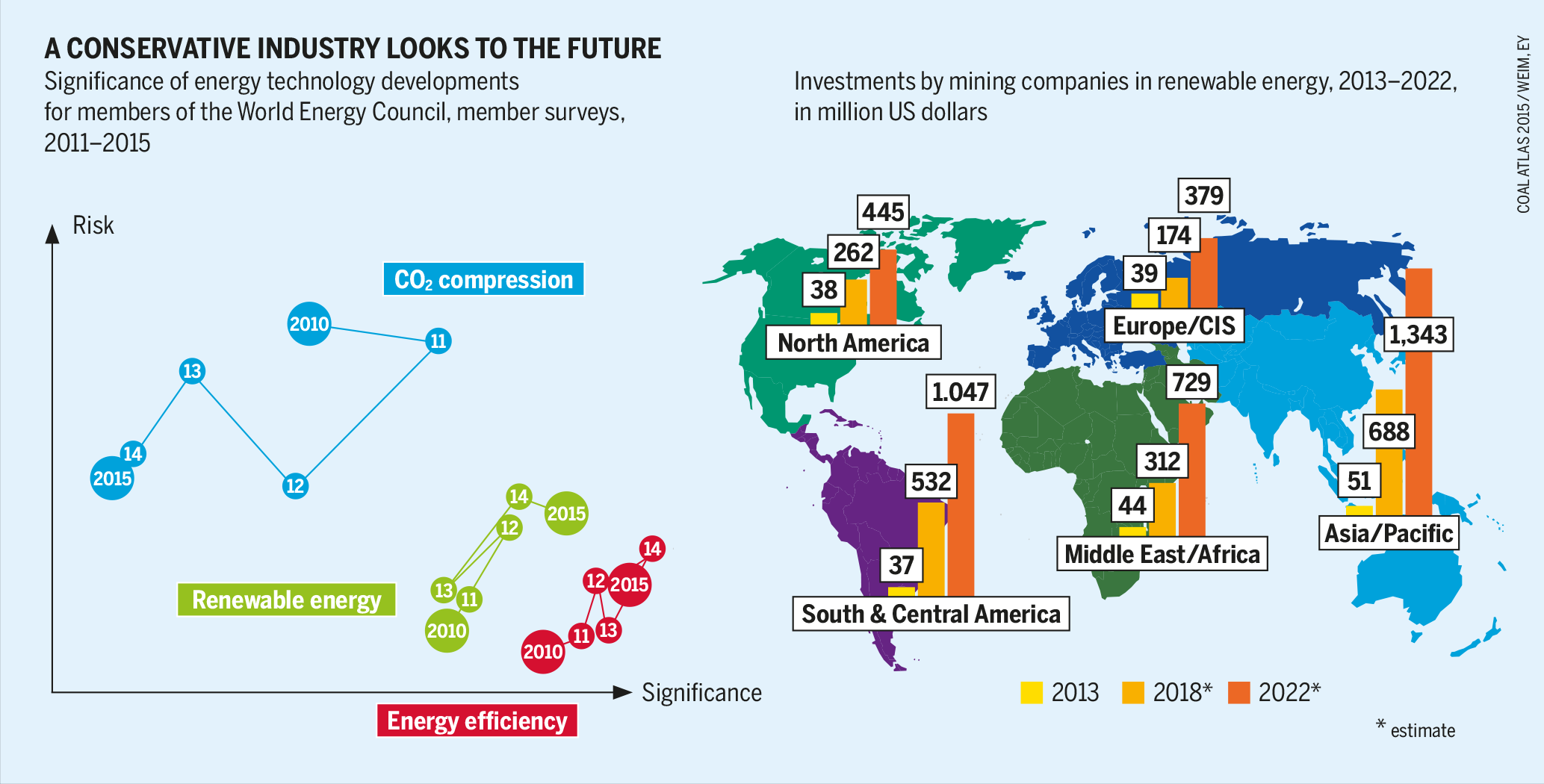 Mining companies are on the lookout for new types of activites. Meanwhile, they carry on with the old. Creator: Heinrich Böll Foundation.
Mining companies are on the lookout for new types of activites. Meanwhile, they carry on with the old. Creator: Heinrich Böll Foundation.  This image is licensed under Creative Commons License.
This image is licensed under Creative Commons License.
Even new plants like the coal-fired power station in Hamburg-Moorburg, which was put online by its operator Vattenfall in 2015, are scarcely economic today. The expansion of renewables in Germany has significantly exceeded most predictions. Many scenarios drawn up in the early 2000s predicted a share for 2020 that was attained by 2010. Renewables are emerging from their niche. Wind and solar power account for 79 percent of all new generation capacity. In Germany, more and more communities are deciding to go fully renewable; around 20 million people now live in so-called 100-percent regions. Power cooperatives in which citizens own shares are leading the shift to decentralized and eco-friendly energy. This grassroots energy transition has attracted interest from abroad. In Germany, the focus is now on maintaining an energy market that does not restrict citizen’s initiatives and is legally aligned to and supports renewable power sources.
Renewables already produce 25.8 percent of the electricity generated in Germany. Together, solar, wind, biomass and co. have displaced lignite from the top of the pecking order of energy sources. On sunny and windy days, renewables can supply up to 80 percent of the German demand – unimaginable only a few years ago. But around noon on 11 May 2014, this was achieved for the first time.
This new reality necessitates a redesign of electricity grids, because the locations where the power is now being generated have moved. To cater for variations in wind and solar power, more flexibility is needed from conventional power plants and from consumers, as well as more storage capacity.
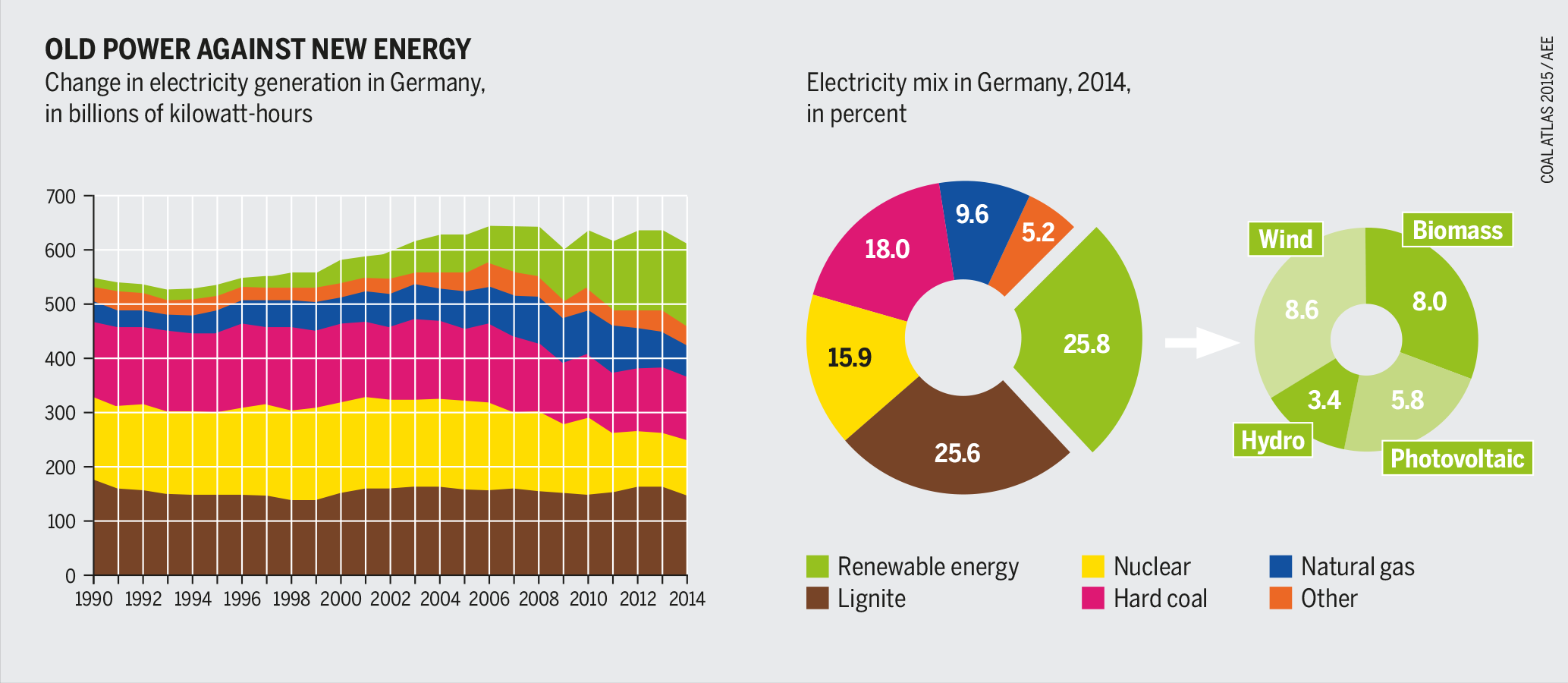 Renewables generated more power than lignite for the first time in 2014. Creator: Heinrich Böll Foundation.
Renewables generated more power than lignite for the first time in 2014. Creator: Heinrich Böll Foundation.  This image is licensed under Creative Commons License.
This image is licensed under Creative Commons License.
But Germany is just one example; renewables are advancing throughout the world. Half comes from “old” renewables such as hydropower or wood burning. But the “new” renewables such as photovoltaic, wind, geothermal, wave and biogas are gathering steam. In global rankings, large countries such as Germany, China and the United States are normally at the forefront. But relative to their economic capacity, Uruguay, Mauritius and Costa Rica are investing significantly more in renewables than their larger counterparts. The fact that energy guzzlers in the information technology sector like Facebook and Google are switching to renewables should be a signal to other sectors too. Greenpeace praises Apple because it already gets all the energy it needs from renewables. Data centres worldwide consume more than 30 gigawatts of power – the amount generated by 30 large nuclear plants.
Developments in wind and solar energy are promising. Mass production, technical advances and bigger markets mean that the costs of facilities are falling fast, in some cases by half in just four years. More and more projects are funded without government support because they are cheaper than fossil-energy sources. For wind power, 2014 was a record year. Globally, new turbines with a total capacity of 51 gigawatts were installed, 44 percent more than in the previous year. China is out in the lead; the 23 gigawatts that joined its grid accounted for almost half of the new global capacity. In Europe wind energy also increased sharply, by 12 gigawatts, led by Germany and Britain. After a weak performance the previous year, the United States also grew by 4.8 gigawatts.
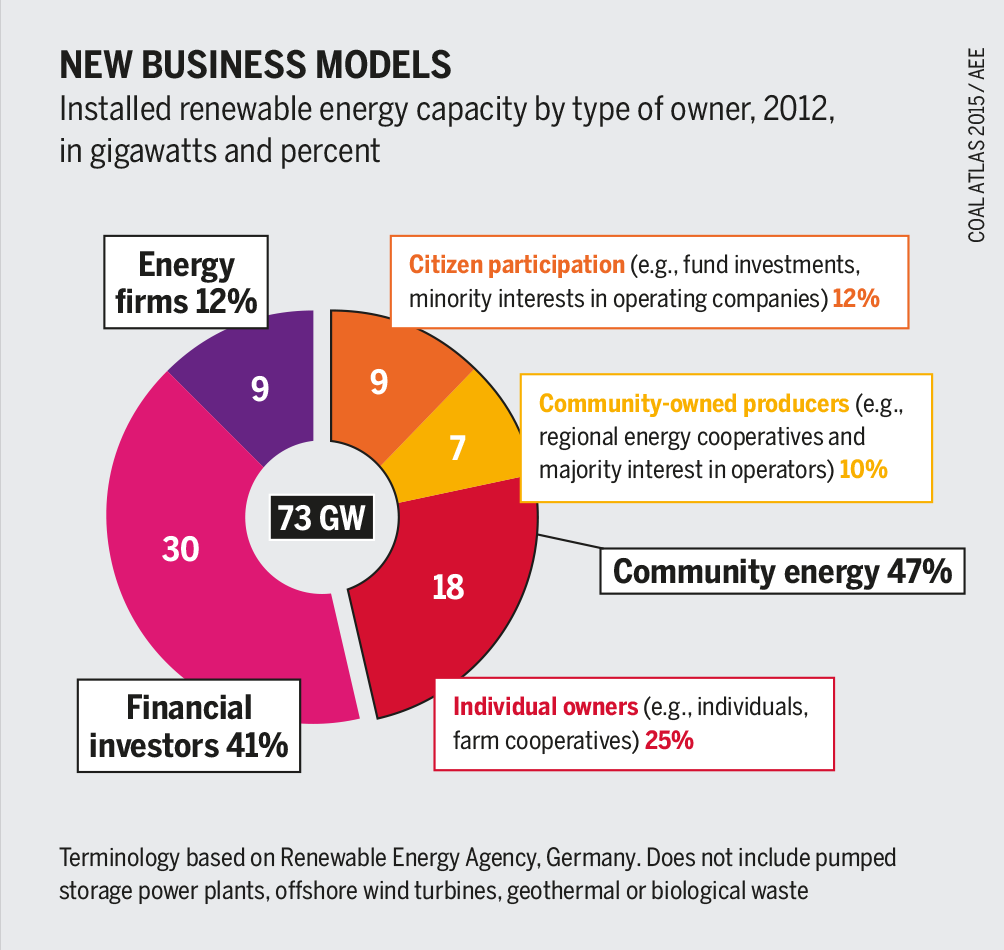 Not just renewable: the energy production of the future should also be decentralized, ecological and democratic. Creator: Heinrich Böll Foundation.
Not just renewable: the energy production of the future should also be decentralized, ecological and democratic. Creator: Heinrich Böll Foundation.  This image is licensed under Creative Commons License.
This image is licensed under Creative Commons License.
In addition, the market for photovoltaics expanded strongly. In 2014, more than 40 gigawatts of capacity were added. China accounts for about one-quarter of the total market. The United States added 6 gigawatts; solar power there produces enough energy to supply four million homes. Upward trends can also be found in Japan (+9 gigawatts), Europe (+7), Latin America and South Africa.
In many developed countries, it is now cheaper for most homeowners to produce their own energy from solar cells on their roof than to buy it from the grid. Solar power is critically important in developing countries, in particular in rural areas that are not yet connected to the grid. For the first time, solar power can supply electricity to residents of these areas and thus improve their lives. This development would have taken years if the rural areas had to wait for power to be supplied by big centralized plants.
Renewables can also present ecological and social problems. Large hydropower dams, mega windparks and big plantations to produce biofuels can lead to human-rights abuses and often to evictions. Widespread planting of monocropped biofuels harms the environment, and the use of agrochemicals is bad for the climate balance. Therefore, the global energy transition is not just about moving away from fossil fuels toward renewable sources. It is also about producing energy in a decentralized, ecological and democratic way.


